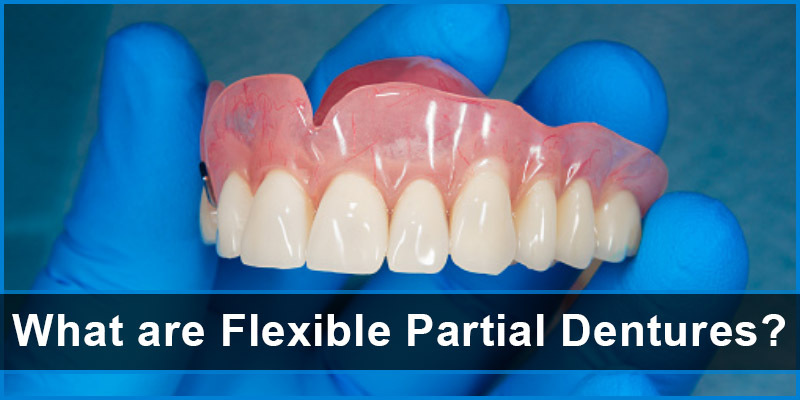 Flexible dentures have become more popular over some time because of their comfort level and flexibility. Flexible partial dentures can be easily picked if your overall teeth are in good condition except for a few. Either your teeth are damaged or missing, and you do not feel the confidence to smile wide or talk openly, don’t worry! You can bring back that glory in your smile with flexible partial dentures.
Flexible dentures have become more popular over some time because of their comfort level and flexibility. Flexible partial dentures can be easily picked if your overall teeth are in good condition except for a few. Either your teeth are damaged or missing, and you do not feel the confidence to smile wide or talk openly, don’t worry! You can bring back that glory in your smile with flexible partial dentures.
But what are flexible partial dentures, and why are they better than customary dentures. I would let you know everything about these dentures, along with their positive and negative faces.
Flexible Partial Dentures
Flexible partial dentures are explicitly designed to substitute a single or a few teeth instead of the entire group of teeth. These dentures are less likely to be displaced while eating because they don’t get enough space to move freely. However, instead of associating a metal clip to existing teeth, they already contain a more flexible and comfortable metal clip to connect with your teeth once you feel more force on one denture than the other, these flexible dentures contract in the center.
Over some years, flexible dentures have been used widely as a temporary solution for decaying teeth. These dentures are not rigid, yet they are very flexible and gentle on your gums. Moreover, it does not deliver much force to your gums to cause inflammation.
However, these dentures are relatively harder to repair because of flexibility and elasticity than traditional and rigid dentures. Thus, some people chose flexible dentures as a permanent solution for their tooth loss who don’t want to do tooth implants or bridges.
Dentures are manufactured with multiple materials according to the patient’s teeth structure. They could be either made with acrylic resin, metal, porcelain, plastic, or a mixture of these substances. However, the flexible partial dentures are particularly made with plastic to give elasticity to them.
How are Flexible Partial Dentures different from Traditional Dentures?
The conventional dentures are more rigid and tough, which are built with hard resin or acrylic materials. Although these dentures are substantially longer-lasting, more lightweight, durable, and can be repaired as well. Yet, they are at great risk of breaking easily because of stiffness, which can become quite uncomfortable and painful for some people. On the other hand, flexible dentures are less breakable, softer, and can be easily fixed according to the teeth’ structure.
Pros of Flexible Partial Dentures
Other than providing comfort, flexible partial dentures provide way more than that. Below are benefits that convince you to choose flexible partial dentures for your tooth loss problems.
✅ They are more flexible and softer than rigid dentures.
✅ They resist chips and stains.
✅ They deliver a pretty natural appearance.
✅ They avoid remaining existing teeth from moving and displacing.
✅ The soft material makes it very comfortable and bendable.
✅ You don’t require metal clips to adjust them.
✅ Their price is less high than the traditional dentures.
✅ Their price is less high than the traditional dentures.
✅ They don’t cause any allergy to your mouth.
✅ They aid you in sustaining the well-being of your remaining teeth.
✅ These dentures are lighter in weight.
✅ The flexible material does not allow them to break easily.
Cons of Flexible Partial Dentures
It is prevalent when choosing flexible partial dentures to compromise durability. However, you must put a glance at its downsides as well.
❌ They are disposed to grow microbes in their depth.
❌ You may still find them pretty expensive.
❌ These dentures are non-repairable.
❌ They are not ideal for long-lasting usage.
Hence, flexible partial dentures are an ideal fixture for many people because they provide safety, comfort, and wellbeing to your teeth. If you plan to opt for them, it is better to consult your doctor first for expert advice.





Leave a Reply